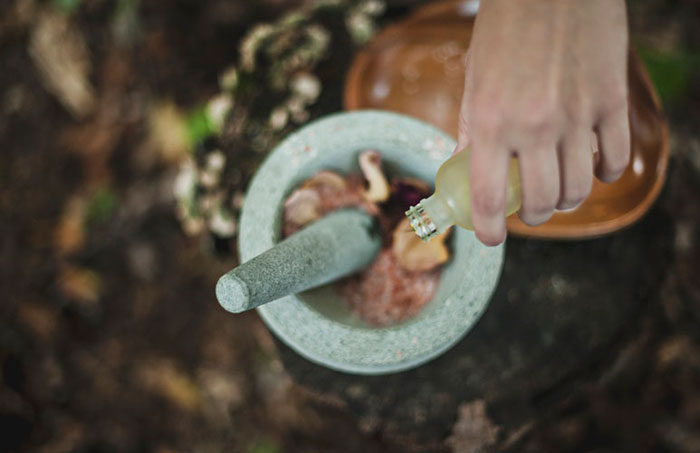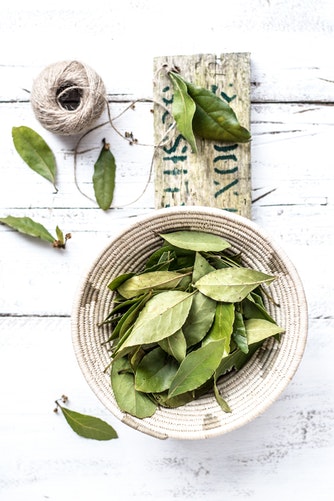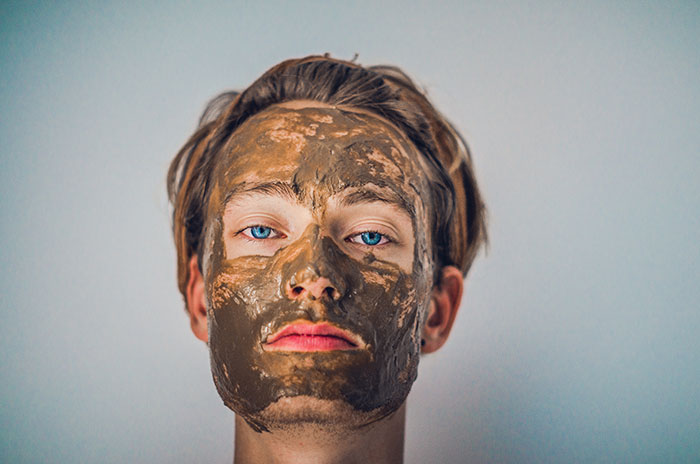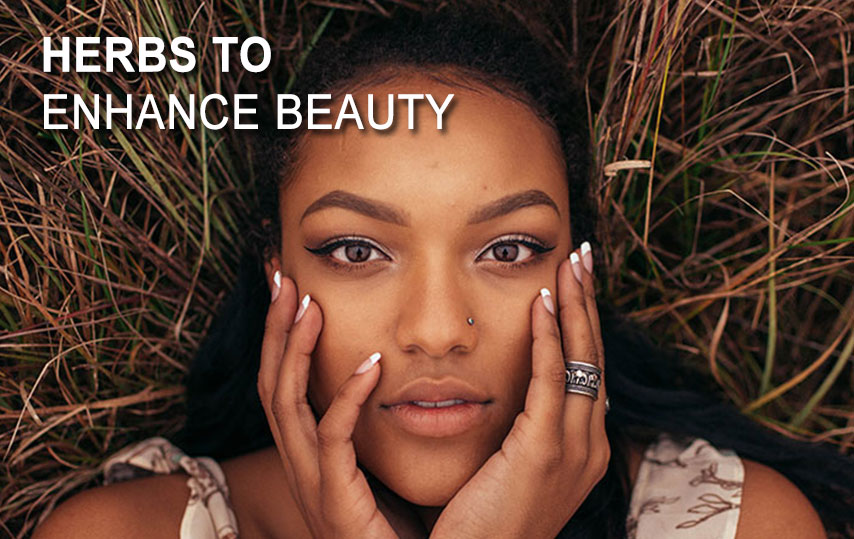Though Ayurveda describes many herbs, combinations and formulations, few chosen herbs can do real magic on human beauty. These herbs are worth knowing and utilizing by all for preserving.
The art of beauty to comes from nature. In fact, the entire idea of beauty – that which is pleasurable to behold starts from the loveliness of nature around us and men and women have been trying to bring that natural beauty into their body and mind for years. From time immemorial, natural flowers, roots and other substances have been used to create beauty products
If you go back to the origin of cosmetics, you will find that the whole concept of ‘making-up’ probably began right in the garden and kitchen of our homes. In India especially, the fragrance of the rose petals was used as a perfume; the cool juice of the cucumber was used to soothe the sunburnt skin; turmeric was used as an antiseptic and fairness agent; cream of the milk was used as an antidote to dry skin; the various nuts were used for the vital oils they yielded after they were crushed, the kohl or kajal was created using the oil lamp residue mixed with a bit of ghee or castor oil…and the list goes on.
Cleopatra gives us evidence of the use of eye make-up being very prevalent in the Arab world. Most cosmetic products all over the world have evolved from natural food colourings like berries and beetroot. In Europe, burnt matchsticks were used to darken eyelashes, and geranium and poppy petals used to colour the lips. Dried lavender flowers were packed in little cloth sachets and tucked in one’s clothes as perfume.
Soon enough, with the advent of theatre and other forms of mass entertainment like the cinema, the actors and stars were held up as the style icons and the effort was to imitate their flawless looks. The famous make-up artist Max Factor began producing a foundation cream that could be used everyday by the regular consumer, which he called ‘Pan Cake’. It was basically used to cover up any skin blemishes. He followed this up by creating eye shadows and lipsticks. As the cosmetic industry gained momentum, companies sought to use chemicals to imitate the colors of the natural ingredients to bring down the cost. Artificial coloring, titanium oxide, wax and oils were added to lipsticks. Titanium was added to bring in the shimmer. Lead sulphide was used in the making of Kohl. Presumably, it was the high cost of natural ingredients as well as the lack of enough initiative and patience to procure these natural ingredients that led cosmetic companies to replace them with chemical substitutes.

As the fashion and beauty industry spread its wings across the world, the demand was more for the exotic range of beauty products that offered metallic shades, glitter in lipsticks and nail enamel, more promise of dandruff removal and shine in shampoos, creams and lotions that promised to do away with the blemishes to give perfect complexion and more.
What the public at large did not realize was that all these personal care products came with a hidden cost – the danger of toxicity. Many products that promised to clean the hair and give it a shine, instead gave rise to allergic reactions in the eye instead of the rosy results they were otherwise expected to give. The side effects of these chemicals include, skin irritation, corrosion of hair follicles and impairment of hair growth. Sodium laureth sulphate used in the shampoos can also be absorbed and go on to affect the heart, liver, lungs and the brain.
What came as a reliable option was, once again the return to nature. Ayurveda evolved as India’s natural healing system by holistically combining the benefits of nature and matching it with human physiology and psychology as well. Apart from simply healing the human body, it also addressed the beauty issues through herbal combinations. Herbal cosmetics leveraged on the beneficial properties of naturally available ingredients and tailored them in a way that they could be seen as being on par with their synthetic counterparts. For example, one has the choice today of opting for a round of the harsh bleach to rid the complexion of blemishes and attain a level of fairness or choose a natural fairness cream that would be a blend of herbs and roots available in an easy to use format.
Herbal beauty products usually make use of beeswax, candelila wax, carnauba- all of which are available naturally. Aloe is a common ingredient. In India, neem, eucalyptus, mint, turmeric, sandal paste, cucumber extracts, clove oil, coconut oil, henna, amla, honey, tulsi and other indigenous plants, herbs and oils are used. Seeds, nuts, as well as bark, resin (sambraani) and the roots of trees and plants are used. Shikakai is a nut that is ground and used as a shampoo in combination with Amla, fenugreek, green gram and hibiscus flowers.
Ancient science behind ayurvedic cosmetics
“Your face takes on the brunt of stress, fatigue, accelerated ageing, impurities and environmental battering – sun, wind and pollution. It suffers further damage when harsh soaps and facial cleansers strip away the natural oils that should protect your skin. Unless you are one of the lucky few who has been blessed with a flawless complexion, it would be worthwhile to try out few natural facial treatments for a change.
Facial steps For kapha prakruti Face:
For a kapha constitution, an initial gentle massage on the face with Amla tailam (gooseberry oil) is required for 30 minutes followed by facial steam for 10-20 minutes. Few drops of camphor oil can be added in the steam. The face and neck must be cleaned using hot water and green gram powder and the face pack is applied for half an hour. When the face pack gets dry, it must be removed very gently using warm water and a drop of amla tailam is applied again. Ideally a prepare-yourself herbal formulation can include powders of:
• Daru haridra (Berberis aristata) – 100 gms • Fresh haridra (turmeric) – 100 gms
• Yashtimadhu (glycyrrhyza glabra/ licorice) – 100 gms
• Indian valerian (valerian wallichi) – 100 gms • Red sandalwood (terocarpus santalinus) – 100 gms All the above powders are mixed well together and a paste is made.
Facial steps For pitta prakruti Face:
The initial massage on the face and neck is done using coconut oil followed by fomentation for 10-20 minutes. The face is then cleansed with warm water and green gram powder. Face pack can be made using following ingredients:
• Sandalwood powder – 250 gms
• Lodhra bark (symplocos racemosa) – 250 gms
• Red sandalwood powder – 250 gms A paste of this above mixture can be made using warm milk and applied as face pack. After it is dried, it is removed using warm water and a drop of oil is applied.
Facial steps For vata prakruti Face
The initial massage is done using gingelly oil for 30 minutes followed by fomentation for 10-20 minutes. Face and neck is cleansed with green gram powder and warm milk. The face pack can include:
Powder dried badara seeds (zizyphus jujuba). 20gms of this powder is mixed with butter, honey, jiggery and made into a paste.

Beauty is 70% mental state and body fitness; cosmetics only help 30%. Disease arises when there is substance among the three doshas and the aim of therapy is to bring about the equilibrium. Ayurvedic treatments are programs that help to achieve the perfect balance that is requested for perfect health, so that the body is free from disease and the mind is free from stress.

Home remedies for glowing skin:
• Lemon and orange peels dried and powdered into fine form are to be mixed with milk or honey or lemon juice and applied evenly on skin and washed off after an hour. This can be done once or twice a week
• Potato juice or powder can also be effectively used. One could wash off with rose water or warm water. Curd or milk can be used to make a face pack with this for more benefits.
• Flour mixed with milk, honey, egg yolk and a little bit of fine salt helps too.
• Green gram paste with white sandal paste can be applied with or without multani matti and this pack is removed it is beneficial to scrub with honey or lemon juice.
• Aloe vera fresh juice or gel to be mixed with turmeric and red sandal paste and applied. Plain aloe vera gel is also very useful to keep skin free of wrinkles and marks.
• Papaya fruit or ripe banana paste with honey or rosewater is helpful for a bright skin

Inheritance plays a major role about which much cannot be done except adopting preventive aspects as advocated in Ayurveda. Daily oil massage preferably medicated oil is highly beneficial. As per Ayurveda our body starts losing its youth by the 2nd decade of life but skin starts showing changes of ageing by the beginning of the 4th decade and present day research also substantiates this claim.
Ancient Indian sciences knew that sunlight is essential in proper quantities and in individualised quantities and can be having great health benefits or can be harmful if sunlight is intense and for long duration.

















 Other
Other